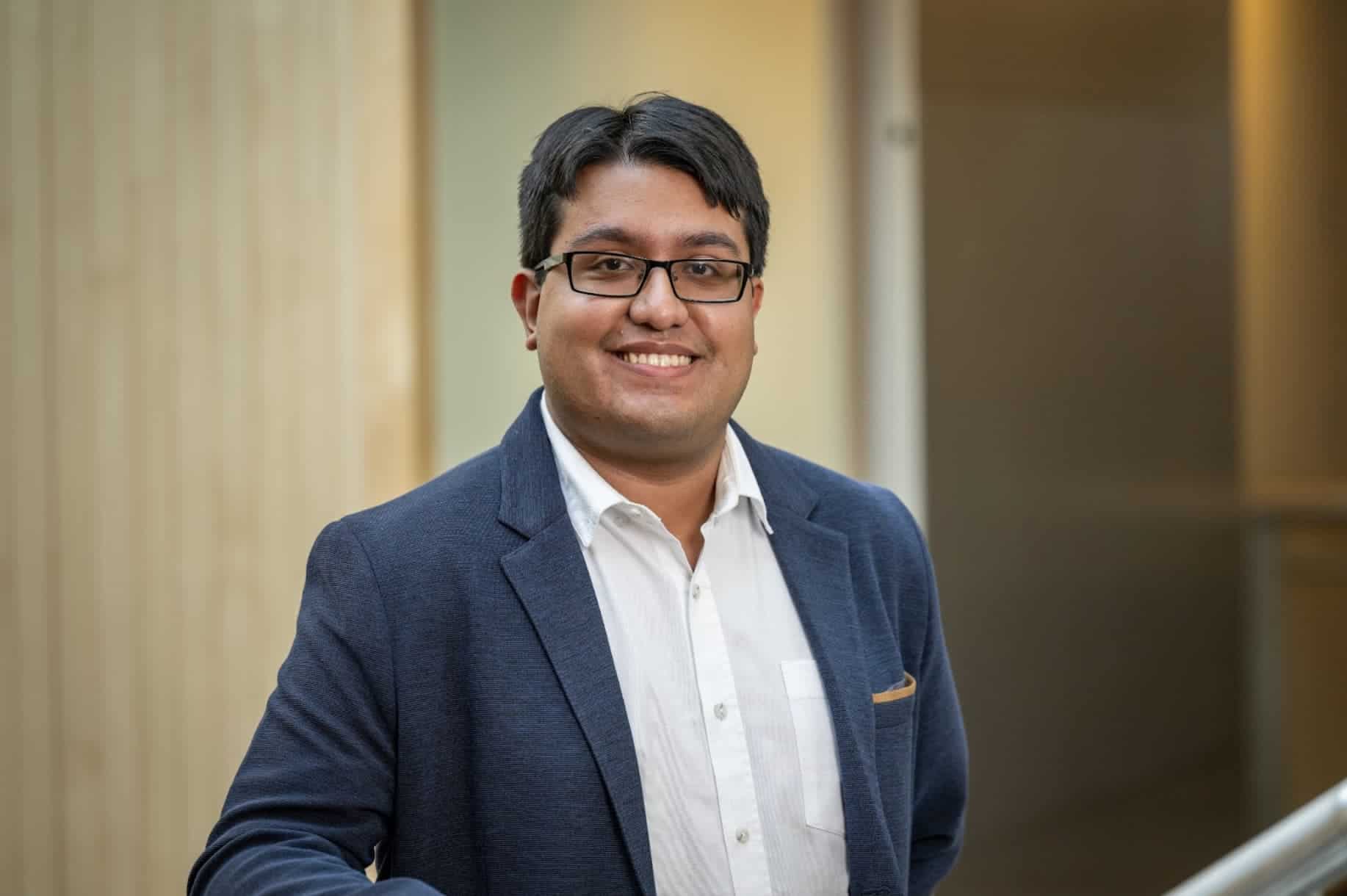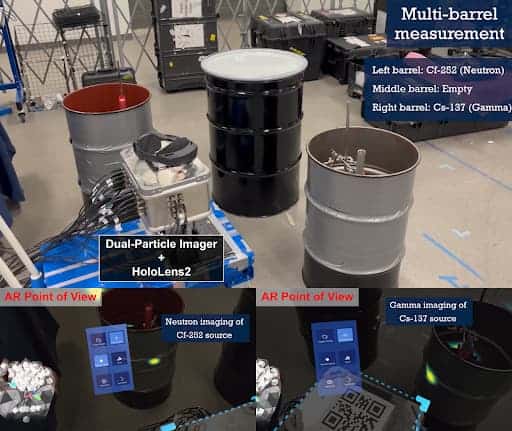
Ricardo Lopez wins award for augmented reality visualization for nuclear inspections paper
The NERS graduate student was given the Nonproliferation and Arms Control Division award at the 2024 Institute of Nuclear Materials Management Conference.

The NERS graduate student was given the Nonproliferation and Arms Control Division award at the 2024 Institute of Nuclear Materials Management Conference.
NERS graduate student Ricardo Lopez was recognized at the 2024 Institute of Nuclear Materials Management (INMM) Conference with the Nonproliferation and Arms Control Division award. His award-winning paper, “Dual-Particle Visualization with HoloLens 2 in an Inspection Scenario,” showcases a Unity-based application that was developed for the Microsoft HoloLens 2 augmented reality headset.
“The application allows for the user to combine the imaging information collected from a particle imaging system with the spatial mesh of the HoloLens and visualize source locations in the mixed-reality space,” said Ricardo. “At the conference, we showed successful visualization of both neutron and gamma sources while stored inside storage containers to simulate an inspection scenario.”
One of the biggest challenges Ricardo faced during this project was the extensive computer science knowledge required to develop the application pipeline. He overcame this hurdle through collaborative work with computer science undergraduates during the summer.
“There are multiple potential ways for this research to contribute in the field of nonproliferation and arms control,” said Ricardo. “The most apparent is by allowing operators in the field to use the HoloLens and app to localize sources during inspections. Other options are to use the technology during safety or training exercises.”

Ricardo’s journey to NERS began in the Fall of 2016, driven by his discovery that the University of Michigan has the top nuclear engineering program in the country. After completing his Bachelor’s here, he pursued a one-year Master’s program in 2020. The research he conducted during this period ignited his passion for further academic exploration, leading him to pursue a PhD under the mentorship of Professor Sara Pozzi.
“Ricardo exemplifies the qualities of a Michigan PhD student. His passion for nuclear research and collaborative spirit helped recruit and mentor several undergraduate students. They are working on the next iteration of our research group’s imagers to enable radiation detection and mixed reality applications to make radiation visible to the human eye,” said Pozzi.
Ricardo’s fascination with nuclear engineering can be traced back to seventh grade when a series of lessons on atoms and nuclear forces captivated his interest. This early spark evolved into a deep-seated passion for particle imaging and mixed-reality data visualization, fueled by the potential applications in nuclear safeguards, verification, and education. The integration of mixed reality into his research is a testament to his commitment to leveraging emerging technologies to enhance operator ease of use and effectiveness.
At NERS, Ricardo researches within the Detection for Nuclear Nonproliferation Group (DNNG). “Working with the DNNG has been a fantastic experience so far,” he said. “There is a lot of expertise to draw from and there is a lot of lab equipment available that can help in research efforts.”
Specific courses, such as NERS 535 and NERS 532, have also significantly impacted his academic growth. NERS 535, a lab course, introduced him to various lab experiments and data processing methods, while NERS 532 included a trip to Oak Ridge National Laboratory, providing valuable insight into the national lab environment.
Ricardo offers advice to students interested in pursuing research in nuclear nonproliferation and particle imaging: “Read journal publications in that area—there are constantly new, interesting papers coming out! If possible, find an internship with one of the Michigan measurements professors or at one of the national labs.”
Looking ahead, Ricardo aspires to continue his research at one of the national labs in the U.S. He believes that mixed-reality visualization has the potential to become a commonplace tool in nuclear engineering, particularly for source localization, due to its utility in field scenarios.